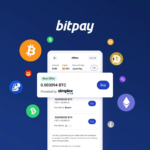About Galxe
Galxe is the world’s leading Web3 credential data network and was launched on April 28, 2022, on Binance Launchpool.
- About Galxe
- Who Are the Founders of Project Galaxy?
- What Makes Galxe Unique?
- Problems With the Current Credential System
- Project Galaxy Solution
- How Many Galxe (GAL) Coins Are There in Circulation?
- How Is the Galxe Network Secured?
- Where Can You Buy Galxe(GAL)?
- Conclusion
- FAQ
- What is Galxe?
- What sets Galxe apart as a leader in Web3 community building?
- How has Galxe contributed to the growth of specific platforms?
- What are reward-based loyalty programs, and how does Galxe incorporate them?
- How many partners does Galxe collaborate with, and what is the nature of these partnerships?
This is built on open and collaborative infrastructure that allows Web3 developers and projects to profit from credential data by building better products and communities.
Data curators are rewarded when users employ their credentials in Project Galaxy’s Application Modules, Credential Oracle Engine and Credential API at the same time.
| Galxe | Facts |
|---|---|
| Defi Coin Name | Galxe |
| Short Name | GAL |
| Total Supply | 200,000,000 GAL |
| Circulating supply | 84,890,333 GAL |
| Chat Option | Click Here To Visit Compound Chat |
| Official Website | Click Here To Visit |
Who Are the Founders of Project Galaxy?
Harry Zhang is the co-founder and project lead at Project Galaxy. Zhang was the COO and co-founder of Lino Network, as well as the co-founder of DLive.tv. At Lino and DLive, Harry oversaw the team and created the product that served more than 10 million monthly active users.
Prior to that, Harry was head of data product at Club Factory, where he designed a data-centric supply chain and recommendation system from the ground up. Zhang holds a bachelor’s degree from UC Berkeley in computer science with a minor in statistics. From 2016 to 2017, he was the President of the Associate of Chinese Entrepreneurs (ACE) at UC Berkeley.
Charles Wayn is the co-founder and strategy lead of Project Galaxy. Before co-founding Project Galaxy, Charles was the co-founder and CEO of DLive.tv. After DLive merged with BitTorrent in 2019, Charles became the VP of Interactive Entertainment at BitTorrent, heading up several streaming business units including DLive.tv, DLive Protocol and the Two App. From 2017 to 2018, he served as President of the Association for Chinese Entrepreneurs (ACE) at UC Berkeley.
What Makes Galxe Unique?
To meet the demands of data security, organizations are increasingly turning to centralized credential management solutions. Today, credentials are stored in closed databases controlled and permissioned by applications, governments, and financial and credit institutions. As a result, there is a fractured landscape that is not open to those who truly own the data or the applications that require it.
The aim of Galxe is to address this problem by providing a public and collaborative credential data network that will enable Web3 developers to use credential data to create better products and more engaging communities.
The goal of Project Galaxy is to establish a public, collaborative data network that is available to all Web3 developers. The infrastructure for community members to create and contribute digital credentials to our data network is provided by the project. Curation of credentials may be accomplished using several sources through Project Galaxy’s infrastructure.
Problems With the Current Credential System
Credential data today are segregated across closed databases that are owned and permissioned by applications, government organizations, and financial and credit institutions. This has led to a fractured landscape that is not open to the individuals who should own that data or the applications that need it. Project Galaxy aims to solve this problem using an open and collaborative credential data network which will help Web3 developers leverage credential data and NFTs to build better products and more engaging communities.
Project Galaxy Solution
Project Galaxy provides the infrastructure for community members to curate and contribute digital credentials to the Galaxy Credential Data Network. The infrastructure supports curating credentials through multiple data sources. Curators can contribute data from 7 different chains with subgraph queries or snapshots for on-chain credentials. They can also provide data from Twitter, Discord, Github, or offline events for off-chain credentials.
Project Galaxy also provides Application Modules, Credential API, and a Credential Oracle Engine to help developers leverage credential data. Use cases of the Application Modules include Galaxy OATs (On-chain Achievement Tokens), NFT loyalty programs, growth hacking campaigns, gated community, and customized governance. Developers can also utilize the Credential Oracle Engine and Credential API for enhanced customized use cases such as credit scoring and Sybil attack prevention algorithms.
How Many Galxe (GAL) Coins Are There in Circulation?
The GAL token is used for: Governance; Paying for Application Module Fee; Paying for Galxe Oracle Engine and Galxe Credential API; Curating Digital Credentials.
The total supply of GAL tokens stands at 200,000,000 with the circulating supply currently at 35,161,333.00 GAL.
At the token generation event (TGE), the 2% early adopter rewards have now been completely unlocked. The 10% foundation release schedule has been switched from 3 years to a 4-year vesting period. The 15% team release schedule will be changed from 5 years to 6 years of vesting.
How Is the Galxe Network Secured?
The GAL token is available as both an ERC-20 and BEP-20 token. The ERC-20 token is built on top of the Ethereum blockchain, which has shifted to a more energy-efficient proof-of-stake (PoS) consensus on Ethereum 2.0.
The BEP-20 token is built on top of the BNB Smart Chain blockchain. It is secured by the Tendermint byzantine-fault-tolerant (BFT) consensus mechanism.
Where Can You Buy Galxe(GAL)?
The GAL token can be bought from the following exchanges: Binance, Bybit, Huobi Global, Gate.io, KuCoin and more.
Want to keep track of GAL prices live? Download the CMC mobile app.
Conclusion
Conclusion Galxe stands as an undisputed leader in Web3 community building. Boasting over 11 million unique individuals as users, Galxe has not only amassed an impressive user base of 11 million but has also played an instrumental role in propelling forward groundbreaking platforms such as Optimism, Polygon and Arbitrum forward. Through partnerships with over 3000 associates enriched with reward-based loyalty programs Galxe stands as an unrivaled community building resource.
Galxe’s success in unifying users and platforms across the Web3 landscape is a testament to its innovative vision and unfaltering commitment to pushing back against limits of possibility. Galxe continues to lay out a blueprint for digital interactions and community engagement; setting an unparalleled standard as a catalyst for decentralized collaboration and growth that will influence Web3 endeavors for years to come.
FAQ
What is Galxe?
Galxe is a prominent platform dedicated to the development and nurturing of Web3 communities. It serves as a hub for users, projects, and partners within the Web3 ecosystem, fostering collaboration and growth through its innovative features.
What sets Galxe apart as a leader in Web3 community building?
Galxe’s leadership is defined by its substantial user base, which exceeds 11 million unique individuals. This massive community has played a pivotal role in driving the growth and adoption of various Web3 projects, including Optimism, Polygon, and Arbitrum.
How has Galxe contributed to the growth of specific platforms?
Galxe’s influence can be seen in its significant contribution to platforms like Optimism, Polygon, and Arbitrum. By providing a fertile ground for these platforms to engage with users and gather feedback, Galxe has propelled their advancement and adoption.
What are reward-based loyalty programs, and how does Galxe incorporate them?
Galxe has introduced reward-based loyalty programs that incentivize users to actively participate in the Web3 communities they are a part of. These programs offer rewards, tokens, or other benefits to users for their engagement, thus fostering a sense of commitment and loyalty.
How many partners does Galxe collaborate with, and what is the nature of these partnerships?
Galxe boasts partnerships with more than 3000 associates. These partnerships extend across a diverse range of projects, all of which benefit from Galxe’s platform and its capacity to facilitate engagement, interaction, and collaboration.








